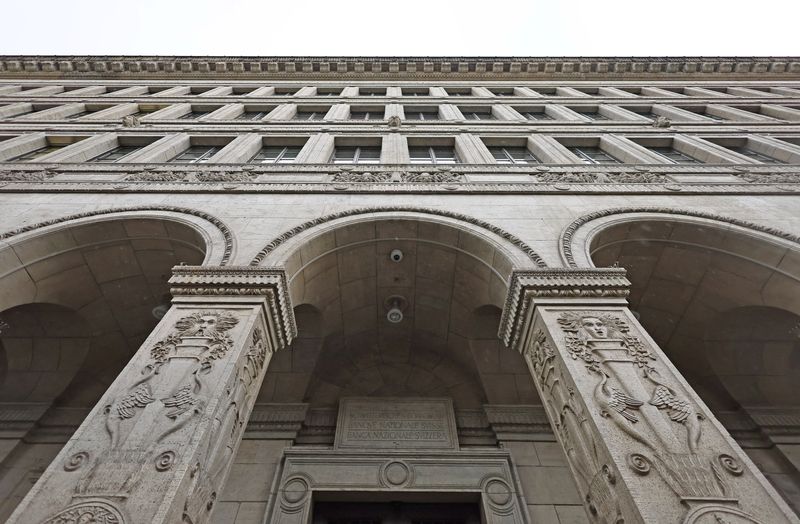Switzerland leads big central banks in rate cuts as US Fed lags
2024.06.20 12:52
By Harry Robertson and Dhara Ranasinghe
LONDON (Reuters) – Switzerland is at the front of the rate-cutting pack among developed economy central banks, lowering borrowing costs again on Thursday, while the all-important Federal Reserve is nowhere near the starting line as the U.S. economy stays strong.
Following the most aggressive global rate-hiking cycle in decades, here’s where leading central banks stand and what they are expected to do next:
1/ SWITZERLAND
The Swiss National Bank followed up on March’s interest rate cut with another reduction on Thursday to 1.25%. The step lower surprised some analysts, given a recent pick-up in Swiss growth and a mild rise in inflation to 1.4% in April.
Switzerland’s franc had been trading around a three-month high but dropped more than 0.5% against the dollar after the decision.
2/ SWEDEN
Sweden’s Riksbank lowered borrowing costs to 3.75% from 4% in May and is expected to hold them steady when it announces the next rate decision on June 27.
Inflation in May rose by a higher-than-expected 2.3% from a year earlier but has come down from a peak of over 10% in 2022 and markets still expect further easing to come.
The Riksbank expects to make two more cuts this year.
3/ CANADA
The Bank of Canada in June became the first G7 nation to cut rates, trimming benchmark borrowing costs by 25 bps to 4.75% and promising more easing to come.
The BoC’s first cut in four years was widely expected after inflation hit a three-year low of 2.7% in April. Traders expect two more 25 bps cuts this year.
4/ EURO ZONE
The ECB cut rates for the first time in five years on June 6, lowering its record-high deposit rate by 25 basis points to 3.75%.
But the ECB raised its inflation forecasts and appears in no rush to cut rates again soon. Markets price in a further 40 bps of rate cuts by year-end.
5/ BRITAIN
The Bank of England left rates unchanged at a 16-year high of 5.25% on Thursday ahead of a July 4 election, but some policymakers said their decision not to cut rates was now “finely balanced”.
Money markets price in almost 50 bps of cuts by year-end and a roughly 44% chance of a quarter point move at the next meeting in August, compared to 32% a day earlier.
6/ UNITED STATES
The Fed held rates in the 5.25% to 5.5% range on June 12 and policymakers said they now think only one cut is coming this year, down from three in March.
Traders are more optimistic and price in around 45 bps of cuts for 2024, buoyed by steps down in inflation in April and May to 3.3%.
7/ NEW ZEALAND
Investors think there’s a 40% chance the Reserve Bank of New Zealand cuts rates in October, money market pricing suggests.
High rates have hobbled New Zealand’s economy but the central bank at its May meeting prioritised battling inflation, which was running at 4% in the first quarter.
8/ AUSTRALIA
The Reserve Bank of Australia has held rates at a 12-year high of 4.35% since November, and is not expected to lower borrowing costs until well into 2025.
Australian consumer inflation for April unexpectedly picked up to a five-month high of 3.6%, year-on-year.
9/ NORWAY
Norway’s central bank held rates at 4.5% on Thursday and said borrowing costs would likely stay there until 2024.
Core inflation stood at 4.1% in May, showing underlying inflationary pressures remain strong.
10/ JAPAN
The Bank of Japan is the global outlier, raising rates out of negative territory in March in its first hike in 17 years.

The central bank held rates steady on June 14 but said it will start trimming its huge bond purchases, another part of its quest to normalise monetary policy.
BOJ Governor Kazuo Ueda on Tuesday said the central bank could raise interest rates in July if economic data allowed.








